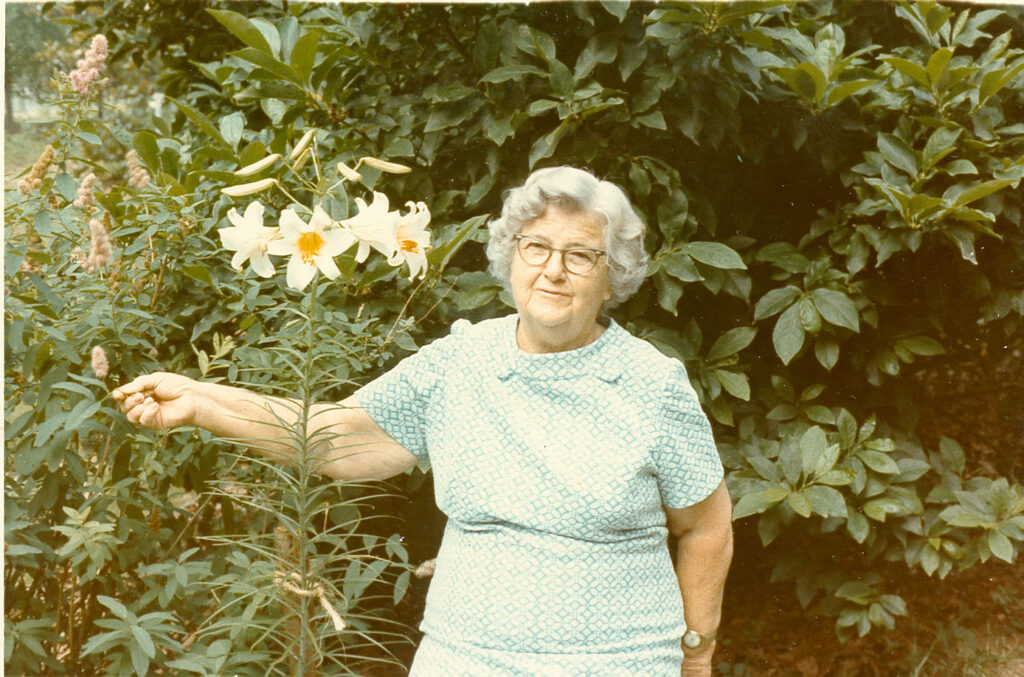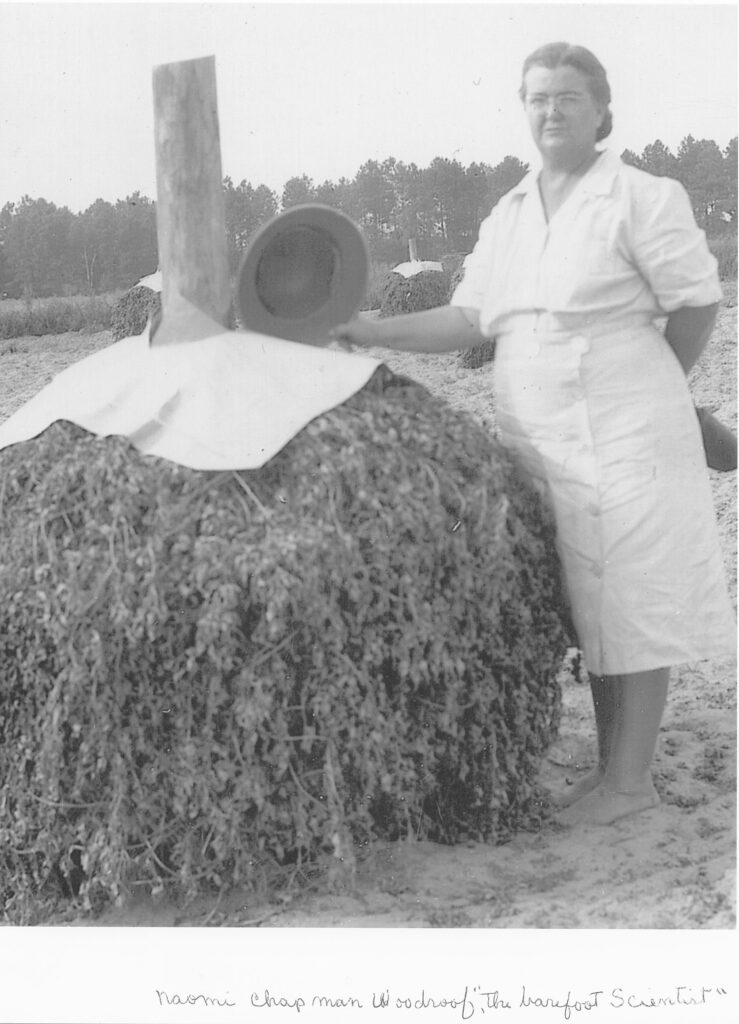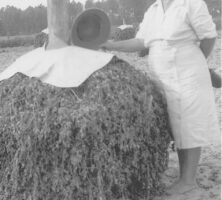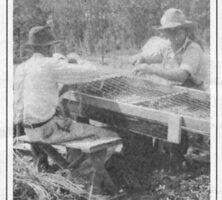Naomi Chapman Woodroof, the daughter of pioneer settlers on the Snake River in Idaho, was also a pioneer in her own right. She was the first woman student and first woman graduate of the University of Idaho College of Agriculture, and one of the first two women in the United States to hold a degree in agriculture. She was the first woman scientist at the Georgia Experiment Station and the first state-employed plant pathologist at the Coastal Plain Experiment Station (later University of Georgia Tifton campus). Woodroof was also the first woman named to the Georgia Agricultural Hall of Fame and one of the”Twenty-five for the Twenty-first Century” honored in a resolution passed by the Georgia House of Representatives in 1997. Her research was a key component in transforming peanuts from a crop for hog feed to an essential food product.

Courtesy of Lawrence Akers
Woodroof’s early life was challenging. She spent long hours helping with her father’s sheep and cattle ranch, she crossed the Snake River by rowboat daily to attend school, and she participated in and judged livestock shows. After obtaining her degree in animal husbandry from the University of Idaho, she found no openings for women in this field and turned to plant pathology, receiving a master’s degree, also at the University of Idaho, in 1924.
Although the University of Georgia and other southern universities did not accept women as either students or faculty, the Georgia Experiment Station in Griffin had no such policy, and Woodroof joined the staff there as an assistant biologist. Her first assignment was to work on cotton-seedling root disease, which she identified and developed a method to control.
She next worked with Jasper Guy Woodroof on a pecan project. This partnership led to a number of joint publications as well as their courtship and marriage in 1926. The Shaw Botanical Garden (later the Missouri Botanical Garden) in St. Louis, Missouri, offered her a scholarship for graduate study, but she declined so that she could continue to work, supporting her husband while he pursued his doctorate and bringing up three children. In 1933, when her husband was named the first president of Abraham Baldwin Agricultural College, Woodroof resigned her post at the Georgia Experiment Station, and the family moved to Tifton. She was immediately hired by the Coastal Plain Experiment Station and assigned to a long-term research project on peanuts. Her definitive publications on peanut leaf-spot disease were followed by her research on disease control, culture, and varietal recommendations. This led to five-fold increases in peanut yields.

Courtesy of Jane Woodroof Akers
In reviewing her work at Tifton, former colleagues called Woodroof the unsung hero in plant pathology in the Peanut Belt. Even though some of her work had been attributed to others, peanut growers recognized Woodroof on her retirement by naming her an honorary member of their “Ton-an-Acre” Peanut Club. After retiring from the Coastal Plain Experiment Station, Woodroof returned to Griffin to join her husband, who then headed the Department of Food Science of the Georgia Experiment Station. There she organized and processed data for technical reports and served on food taste panels.

Courtesy of Lawrence Akers
In 1967 the Woodroofs retired and began extensive travels to South and Central America, China, and South Africa, lecturing and gathering information for Jasper Guy Woodroof’s later book publications. Naomi Chapman Woodroof never sought fame or recognition, and it was not until after her death that she received both. The pavilion showcasing Georgia’s agricultural products for visitors to the 1996 Olympics in Atlanta was relocated to the campus of the Georgia Experiment Station and named the Naomi Chapman Woodroof Agricultural Pavilion in honor of her pioneering work in agriculture.










